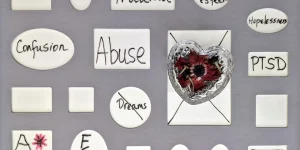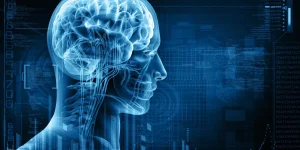The Different Types of Trauma Treatment & Their Effectiveness
Category: Trauma
Trauma is a deeply distressing and disturbing experience that can have a profound impact on an individual’s mental and emotional well-being. Trauma can be caused by a variety of events, such as physical or sexual assault, natural disasters, accidents, or witnessing or experiencing violence. Trauma can result in a range of symptoms, including anxiety, depression, insomnia, nightmares, and flashbacks.
Fortunately, there are effective treatments for trauma that can help individuals recover and reclaim their lives. In this blog post, we will explore the different types of trauma treatment and their effectiveness.

Topic Of Discussion
Cognitive Behavioral Therapy
Cognitive Behavioral Therapy (CBT) is a type of therapy that focuses on identifying and changing negative thought patterns and behaviors. CBT has been shown to be effective in treating a range of mental health disorders, including trauma. During CBT, the therapist helps the individual identify their negative thoughts and beliefs related to the traumatic event and teaches them how to replace these with more positive and helpful thoughts. CBT also involves exposure therapy, where the individual gradually confronts their fears and anxiety related to the traumatic event in a safe and controlled environment.
Research has shown that CBT is effective in treating trauma-related disorders, such as post-traumatic stress disorder (PTSD). A meta-analysis of 15 studies found that CBT was significantly more effective than no treatment or a waitlist control condition in reducing symptoms of PTSD.
Eye Movement Desensitization and Reprocessing (EMDR)
Eye Movement Desensitization and Reprocessing (EMDR) is a type of therapy that involves using bilateral stimulation, such as eye movements or tapping, to help the individual process traumatic memories and reduce the intensity of associated emotions. EMDR is based on the idea that traumatic memories are stored in the brain differently than non-traumatic memories and that the bilateral stimulation helps to reprocess these memories and integrate them into the individual’s overall memory system.
Several randomized controlled trials have shown that EMDR is effective in reducing symptoms of PTSD and other trauma-related disorders. For example, a randomized controlled trial of 30 female survivors of sexual assault found that EMDR was significantly more effective than a waitlist control condition in reducing symptoms of PTSD, depression, and anxiety.
Brainspotting
Brainspotting is a relatively new form of trauma therapy that has gained popularity in recent years. It was developed by David Grand, a New York-based psychologist, who combined elements of traditional talk therapy with a focus on the body and the brain. Brainspotting is based on the idea that traumatic memories are stored in specific areas of the brain and can be accessed and processed through visual and sensory cues.
During a Brainspotting session, the therapist helps the client identify a “brainspot,” which is a specific eye position that corresponds to the area of the brain where the trauma is stored. The therapist then guides the client’s gaze to that spot while engaging in a dialogue about the traumatic memory or experience. By focusing on the brainspot while processing the memory, the theory is that the client can access and release the emotional energy associated with the trauma.
While there is limited empirical evidence to support the effectiveness of Brainspotting, some clinicians and clients report positive outcomes. A small study published in the Journal of Trauma & Dissociation found that Brainspotting was associated with a significant reduction in symptoms of PTSD, depression, and anxiety in a group of 20 adult women who had experienced various types of trauma.
Trauma-Focused Cognitive Behavioral Therapy
Trauma-Focused Cognitive Behavioral Therapy (TF-CBT) is a type of therapy that is specifically designed for children and adolescents who have experienced trauma. TF-CBT incorporates elements of CBT and exposure therapy but is tailored to the developmental needs of children and adolescents. TF-CBT involves teaching coping skills, such as relaxation techniques, and helping the child or adolescent confront and process their traumatic memories in a safe and supportive environment.
Research has shown that TF-CBT is effective in reducing symptoms of PTSD and other trauma-related disorders in children and adolescents. A meta-analysis of 13 studies found that TF-CBT was significantly more effective than no treatment or treatment as usual in reducing PTSD symptoms in children and adolescents.
Conclusion:
Trauma can have a profound and long-lasting impact on an individual’s mental and emotional well-being, but there are effective treatments available that can help individuals recover and reclaim their lives. Cognitive-behavioral therapy, eye movement desensitization and reprocessing, trauma-focused cognitive-behavioral therapy, and Brainspotting therapy are just a few of the types of trauma treatment that have been shown to be effective.
If you or a loved one has experienced trauma and is struggling with its effects, it is important to seek professional help. Tri-Star Counseling offers a range of trauma-focused therapies and our trained and experienced therapists are here to help you on your journey to healing.
Don’t let trauma continue to hold you back. Take the first step towards healing by scheduling a therapy session with Tri-Star Counseling today. Our compassionate and supportive team is here to help you every step of the way.


